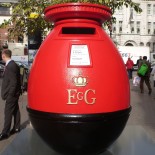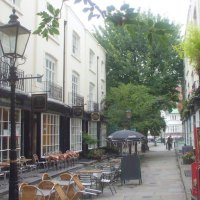Crofton Roman Villa ~the only one you can visit in London!
Crofton Roman Villa is the only villa open to the public in Greater London (opens 28/3/2016 for the summer and closes 28/10/2016). It was inhabited from about AD 140 to 400 and was the centre of a large farming estate. Today you can see the remains of 10 rooms protected inside a public viewing building. While certainly not as impressive as some visitors may hope for as there are mostly only ground level remains, the experience is unique and worth a visit - especially when you consider its convenient location adjacent to a train station.
The Discovery: Although part of the Roman villa was destroyed by a railway cutting in the 19th century, it was discovered in 1926. Then, workmen constructing driveways for new council offices (now Lynwood House) cut through several rooms of the villa. A partial excavation by Mr E Erwood was soon abandoned and apart from limited excavation by the Orpington Historical Society in the 1950’s the site remained buried and overgrown.
The full excavation of the site was carried out by the Kent Archaeological Rescue Unit in 1988 when the villa was due to be destroyed for a new car park for the extended Civic Hall. This work revealed the surviving extent of the building, identified five major periods of construction, discovered important details and recovered an interesting collection of items related to the ruin.
The Building: The villa was constructed in an elevated position overlooking the River Cray and its valley. It was built on Thanet Beds below the crest of the hill, just above the present position of Orpington Station. In Roman times it lay about 11 miles from Londinium, then the provincial capital, which probably formed the focus of this and other local sites. The villa occupants probably made regular visits to the capital, reached in an hour on a good horse, to purchase goods in markets there. The whole area from Crofton to the Thames would have been covered by woods, or open fields and crossed by small clean streams supporting fish and woodland animals. The villa was the centre of a farming estate of about 500 acres. Nearby would have been farm buildings, surrounded by fields, meadows and woods. The house was altered several times during its 260 years of occupation and at its largest probably had at least 20 rooms. The site continued to be occupied during the 4th century and it is likely that the estate had failed by about AD 400. The roof tiles slid off the roof on the west side and the walls gradually collapsed or were robbed. The ruins of the villa slowly became buried under deep layers of soil washing from the slopes above. By no later than about AD 800 the site was lost and forgotten and it remained undisturbed until the 19th century.
Today the whole area and beyond is covered by urban development. Due mainly to the modern buildings and roads, only the site of the main Roman villa-house is known. The positions of barns, outbuildings, a bathhouse and a burial-ground (all known at the nearby Keston villa) are not known at Crofton.
Visiting: The Villa is managed on behalf of the London Borough of Bromley by Kent Archaeological Rescue Unit. Please see the Crofton Roman Villa webpage for visiting and contact information. When you visit you can hear a short talk by an archaeologist, see displays and handle various pieces from the find. NOTE: The Villa is only open from late March through to late October annually. When open it can be visited on Wednesdays, Fridays, Bank Holidays and the first Sunday each month. Hours are generally 10am -1pm and 2pm - 5pm (check their website before visiting). Adults £1.50; Concessions £1.00; Family £4.00.
Located at: Crofton Road, Orpington, Greater London BR6 8AF.
Closest Train: Adjacent to Orpington Railway Station (35 mins from Victoria Stn on Southeastern Trains).


This is an amazing find! Of course we it then had to be partly destroyed, when will we learn?? I think I will make a journey when it’s nice, thanks!
Thanks for the comment… and so agree. To easy to quickly lose things before we realize what is lost.
Pingback: mapsworldwide blog